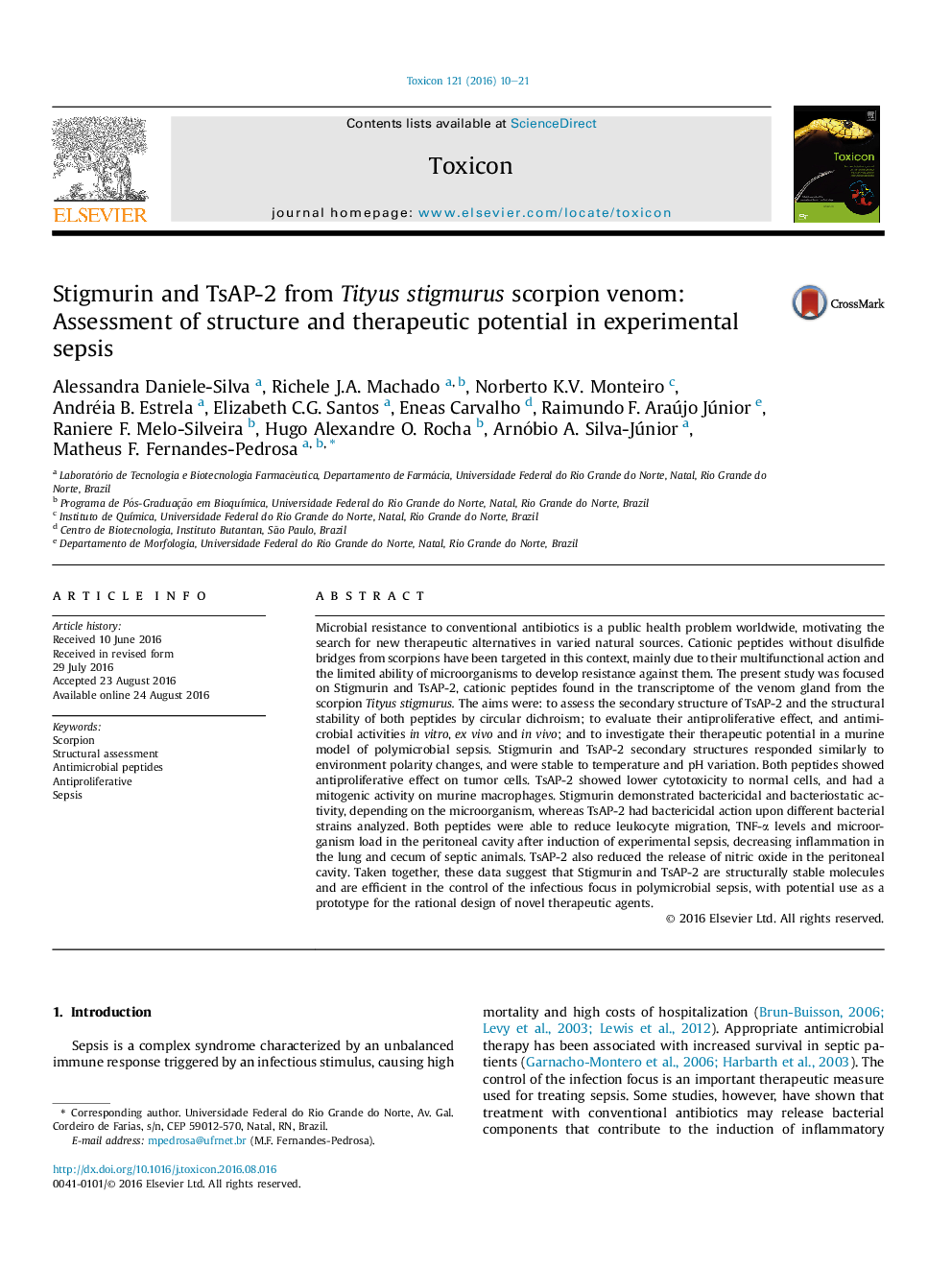| Article ID | Journal | Published Year | Pages | File Type |
|---|---|---|---|---|
| 2063946 | Toxicon | 2016 | 12 Pages |
•Tityus stigmurus venom encode a peptide with mature amino acid sequence identical to TsAP-2 from T. serrulatus.•TsAP-2 changed its secondary structure depending on the polarity of the environment.•Stigmurin and TsAP-2 were stable to temperature and pH variation in the presence of SDS.•Stigmurin and TsAP-2 showed antimicrobial activity in vitro and ex vivo.•Stigmurin and TsAP-2 were effective to reduce microbial load and inflammation in experimental sepsis.
Microbial resistance to conventional antibiotics is a public health problem worldwide, motivating the search for new therapeutic alternatives in varied natural sources. Cationic peptides without disulfide bridges from scorpions have been targeted in this context, mainly due to their multifunctional action and the limited ability of microorganisms to develop resistance against them. The present study was focused on Stigmurin and TsAP-2, cationic peptides found in the transcriptome of the venom gland from the scorpion Tityus stigmurus. The aims were: to assess the secondary structure of TsAP-2 and the structural stability of both peptides by circular dichroism; to evaluate their antiproliferative effect, and antimicrobial activities in vitro, ex vivo and in vivo; and to investigate their therapeutic potential in a murine model of polymicrobial sepsis. Stigmurin and TsAP-2 secondary structures responded similarly to environment polarity changes, and were stable to temperature and pH variation. Both peptides showed antiproliferative effect on tumor cells. TsAP-2 showed lower cytotoxicity to normal cells, and had a mitogenic activity on murine macrophages. Stigmurin demonstrated bactericidal and bacteriostatic activity, depending on the microorganism, whereas TsAP-2 had bactericidal action upon different bacterial strains analyzed. Both peptides were able to reduce leukocyte migration, TNF-α levels and microorganism load in the peritoneal cavity after induction of experimental sepsis, decreasing inflammation in the lung and cecum of septic animals. TsAP-2 also reduced the release of nitric oxide in the peritoneal cavity. Taken together, these data suggest that Stigmurin and TsAP-2 are structurally stable molecules and are efficient in the control of the infectious focus in polymicrobial sepsis, with potential use as a prototype for the rational design of novel therapeutic agents.
